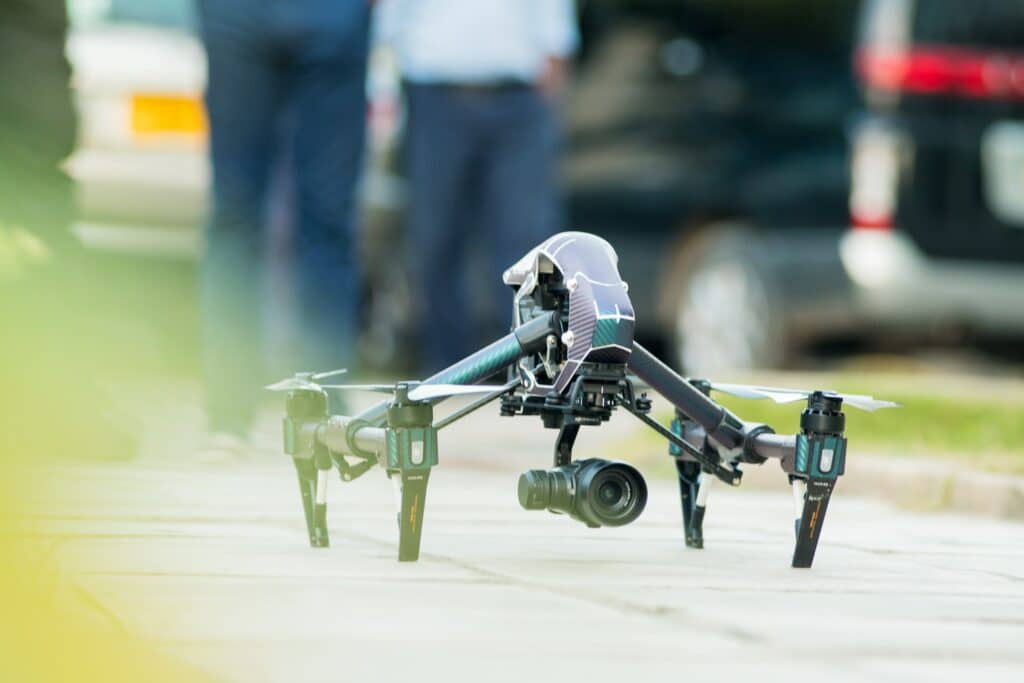
How risky is it to hire just any drone service provider?
Drones have the potential to be dangerous. When used inappropriately, drones can pose a threat to personal safety, both to that of the pilot and bystanders, as well as damage to property. Drones can cause injuries because of their quick movements, rotating parts, and edges. Injuries may happen not just to the user, but to anyone else in the area. But, when flown with care and caution, with their intended use, and in adherence to safety regulations, and good standard operating procedures, drones can be flown safely. These are just a few of the reasons why your drone service provider must incorporate safety procedures.
In addition, your drone service provider must follow a detailed procedural checklist that can help reduce risk and prioritize safe operations for every flight. The Standard Operating Procedure (SOP) for a reputable drone service provider will address not only best practices for the Remote Pilot in Command (RPIC) to follow during the flight but also pre-flight and post-flight protocols to ensure the highest level of safety.
What should a drone service provider do before takeoff?
Even small, lightweight drones require regular upkeep. Batteries can fail to hold a charge, propellers can become damaged or loose, the drone can develop cracks, the gimbal can get stuck, etc. A comprehensive preflight checklist will require a Remote Pilot In Command to inspect all equipment carefully, batteries are fully charged, and the latest firmware updates have been installed for the drone, controllers, and monitors. And it’s best if it’s safely flight-tested before the mission.
Depending on the nature and location of the work, many drone service providers also complete a pre-flight report. This might include information about the type of project, altitude to be flown, and planned flight time, as well as contact information for the landowner or emergency services, and the closest airport. Regardless of whether a pre-flight report is used, the RPIC should assess the winds and other weather conditions prior to leaving for the mission to confirm that the weather is conducive to flight.
Once at the mission location, the RPIC should communicate the flight plan to any members of the flight crew, such as a visual observer, and note any potential obstacles or restricted areas. As part of the flight plan, the pilot should establish not only the designated locations for take-off and landing but also an area for an emergency landing, if needed.
What does a safe drone service provider do during a flight?
After takeoff and before commencing the planned flight mission, the pilot should verify that all systems are a go, confirm active satellite and GPS connections, and double-check that the batteries still indicate a full charge. If a visual observer is present, they should verify that they have the drone in sight. Before landing, the RPIC should scan the landing area for potential obstacles and communicate any concerns, including elevated wind speeds, to the visual observer. As soon as the drone is on the ground, the aircraft should be powered down to avoid potential injury from the propellers or accidental takeoff.
What does a great drone service provider do post-flight?
Running through a detailed checklist after flying a mission can help promote safe and efficient operations for the next flight. Before packing up the drone and other equipment, the RPIC should review the mission notes to confirm that all objectives were met, and verify the image data was captured successfully while transferring to a laptop or other storage device. Assuming the mission is complete, batteries and camera equipment should be removed and stored safely, and the aircraft inspected for noticeable wear or damage. This also may be an appropriate time to update flight and battery logs.
A comprehensive SOP will also address issues like training, emergency procedures, and accident reporting, among other protocols.
Before hiring a drone service provider, vet them by asking about their SOP. Although small in size, drones occupy the same airspace as traditional aircraft, and drone pilots must follow stringent guidelines established by the FAA. Creating a set of best practices as an additional reference can ensure that drone missions go smoothly, and help protect you, the drone service provider, and the public at large.
RPIC should utilize the checklist to ensure the highest level of safety. At a minimum, this pre-flight checklist should contain the following:
1. Required documentation, Pilots Certificate, Required Waivers and/or Permits, Drone Registration,
UAS Flight Manual, Proof of Insurance.
2. Weather conditions suitable.
3. Check the drone for cracks and check all screws are tight.
4. Propeller(s)/Rotor(s) not damaged and tightly fixed.
5. Propulsion system mounting(s) secure.
6. Batteries fully charged and securely mounted.
7. Communications (datalink) check.
8. Ensure the GPS module (if any) has GPS “fix.”
9. Check the mission flight plan.
10. “Return Home” and/or “Emergency Landing” locations (if supported by the particular UAS) are
selected, located appropriately, and loaded to the GCS and aircraft.
11. Ensure sensors are calibrated and that the right setting is loaded.
12. Complete flight crew briefing.
13. Ensure the launch site is free of obstacles.
14. Recheck wind direction before launch.
15. Confirm the phone number for the nearest Air Traffic Control facility in event of an emergency.
When considering hiring a drone service provider make sure they adhere to good safety procedures and protocols.
If not, you could be putting yourself at risk. An unsafe RPIC could cause severe damage and set a project way back. Save time and money and have peace of mind knowing the drone service provider you are hiring knows how to properly follow FAA rules and regulations and ensures safety first. And a good drone service provider knows how to manage their crew in such a way that will mitigate risks, and liability, and ensure the project is completed safely and on schedule. When you hire a great drone service provider you’re also hiring a great RPIC that has a proven safety record.
From The Editor:
Do you need to hire a professional drone service provider? To speak to an aerial data specialist, fill out a form, email us or for even faster response times, give us a call at (833) FLY-4YOU or (833) 359-4968. Check out our transparent pricing at Drone Photography Pricing and watch this space as we expand on the above topics and more over the coming weeks and months. If you like this post, feel free to click the share button at the bottom of the page. We appreciate you helping us by spreading the content we share on our blog.
- Drones That Fight Fire With Fire - December 8, 2022
- How’s Your Drone Service Provider At Crew Management? - November 14, 2022
- Does Your Drone Service Provider Incorporate Safety Procedures? - November 9, 2022

